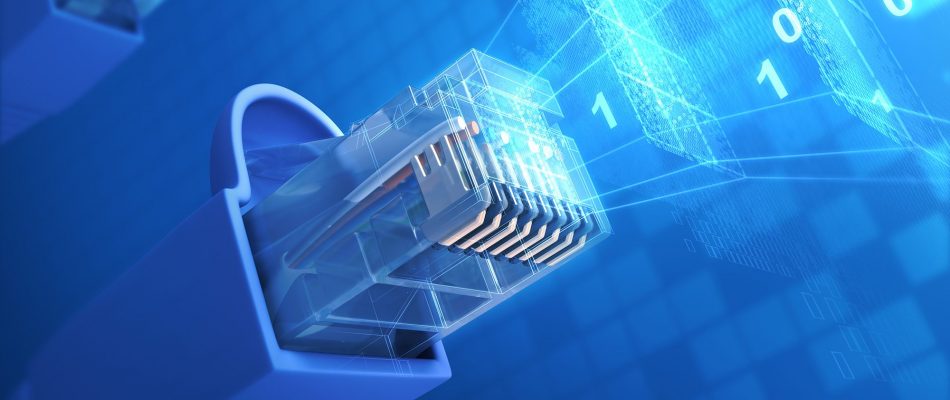The need for fast, smooth, and interruption-free network connections has never been greater. Businesses and households rely on network connections to connect them to the outside world, and network connections rely on Ethernet cables to make this possible.
You may have heard of Cat5, Cat6, or Cat7 Ethernet cables. If you haven’t, they are the most commonly used Ethernet cables around the world. Each new category (Cat) of cables typically provides larger bandwidth and longer running capacities than before.
They improve connections by making them faster, smoother, and more interruption-free. However, to fully understand these Ethernet cables, you must first understand their basics. Hence, we are sharing Ethernet cable basics to further your understanding of their application in different situations.
Always remember to consult experienced professionals like Communications Solutions Inc. in Jacksonville, Florida, before opting for Ethernet cable installations.
Ethernet Cable Basics
Here are the basic elements of an Ethernet cable that are true for all commonly used categories of network cabling.
- Twisted Pair Design
Offices and homes around the world use Ethernet cables for connectivity. The most commonly used Ethernet cables all run twisted pair wires. These pairs are designed to balance out the currents they transfer.
The twisted-pair design of cables works well for the purpose they serve. Both the wires run currents in the opposite direction to cancel out the fields around a twisted pair, allowing smooth transmission of data in Ethernet cables that can run longer lengths without fail.
Cables running multiple twisted pair wires have different twists per unit of length for each pair. These twists are made to eliminate any crosstalk between the twisted pairs of a single network cable. To prevent crosstalk at the cable’s full length, the rate of twists per unit length for each pair is based on prime numbers.
This arrangement ensures that no two pairs within a cable will ever align their twists to create crosstalk.
- Unshielded (UTP), Shielded (STP), and Foil Shielded Twisted Pairs (FTP)
Initially, all Ethernet cables were unshielded. Unshielded twisted pairs (UTP) work just fine for connecting your computer to your router or any short lengths within an office or home.
However, longer-running network cables require shielding to prevent electromagnetic interference (EMF) from nearby electronic devices, fluorescent lights, and other sources of electromagnetic fields. There are different methods for shielding ethernet cables.
Foil shielded twisted pairs (FTP) cables are the most commonly used cables that best prevent interference and improve connection performance over longer lengths. These are cables where each twisted pair is shielded by foil.
This shielding serves a dual purpose. It prevents external interference and also helps reduce internal crosstalk between twisted pairs of a cable. FTP cables are highly useful in running network cables or Ethernet cables, increasing external interference.
Lastly, shielded twisted pair (STP) cables refer to Ethernet cables with a braided metal shield, usually copper, around the combined twisted pairs of a cable. The braided shield is placed under the cable jacket to shield all the twisted pairs inside.
Again, this is done to prevent external interference; however, it has little to no effect on internal crosstalk. Manufacturers use combinations of FTP and STP to create Ethernet cables for all purposes. They label them with codes, and you can identify each by looking at the labeling on each cable.
- U/UTP
Unshielded cable, unshielded twisted pairs. The original cables with no shielding.
- F/UTP
Foil shielded cable, unshielded twisted pairs. The cable is shielded with foil; however, the twisted pairs are unshielded.
- U/FTP
Unshielded cable, foil shielded twisted pairs. The cable is unshielded but, the twisted pairs are individually foil shielded to prevent interference and reduce crosstalk.
- S/FTP
Braided shielded cable, foil shielded twisted pairs. The cable is shielded with a braided metal shield, and the twisted pairs are individually shielded with foil.
Naturally, the more shielding in a cable, the more expensive it gets. Therefore, S/FTP Ethernet cables are relatively more expensive because they provide the most shielding.
- Stranded Cables and Solid Cables
The last defining difference between all categories of Ethernet cables is whether they are stranded or solid cables. Stranded cables run multiple strings of twisted copper strands within each wire of a twisted pair, whereas a solid cable runs a single piece of copper within each twisted pair wire of a cable.
Stranded cables are the industry standard and have more flexibility, making them ideal for an environment where the cable is often moved. For example, using these cables in an office or home to connect your computer to a router or different outlets would be ideal.
Solid cables, however, are not as flexible, which makes them more durable and best suited to environments where the cable will remain intact. For example, permanent cable installations in walls, false ceilings, or under the floors.
Conclusion
Understanding these Ethernet cable basics will help you better understand the type of cable you need for different environments. If there is interference, you may want to go for improved shielding. If the installation is permanent, you may opt for solid cables.
Hopefully, you now have a better idea of the basic elements of an Ethernet cable and what makes them functional for various situations.
It is always best to consult professionals before you opt for any Ethernet or network cabling, and this means Communications Solutions Inc. if you live in or around Jacksonville, Florida.
If you want to learn more about Ethernet cable basics, or if you want the best Ethernet solutions for your business or home in Jacksonville, Florida, Contact Us Today.


